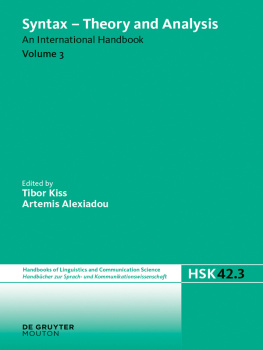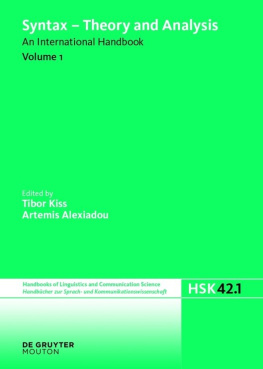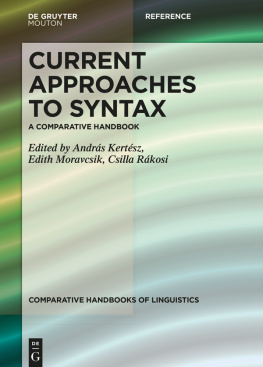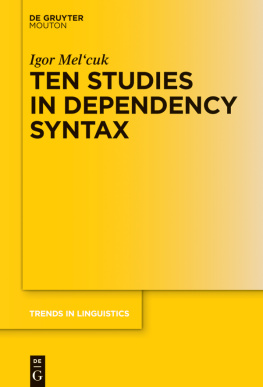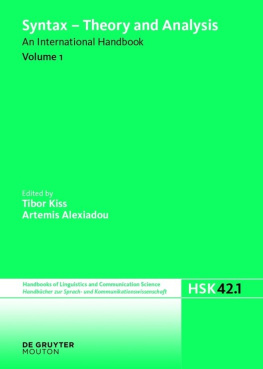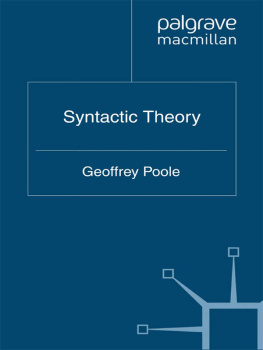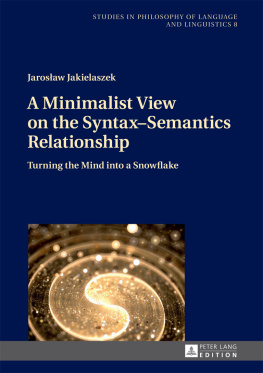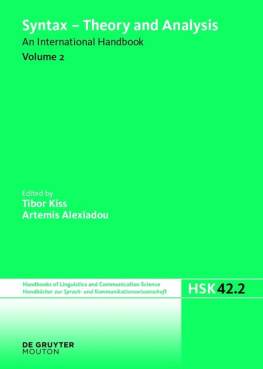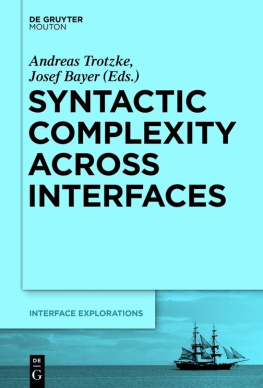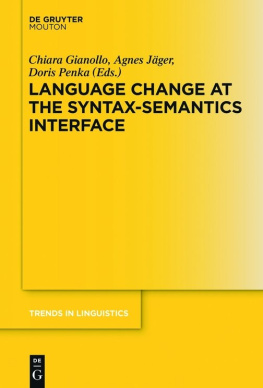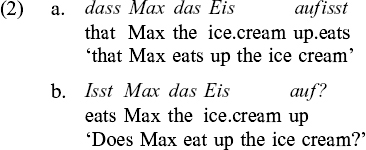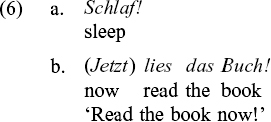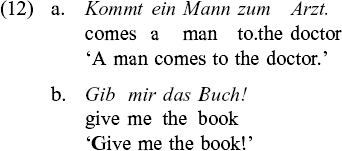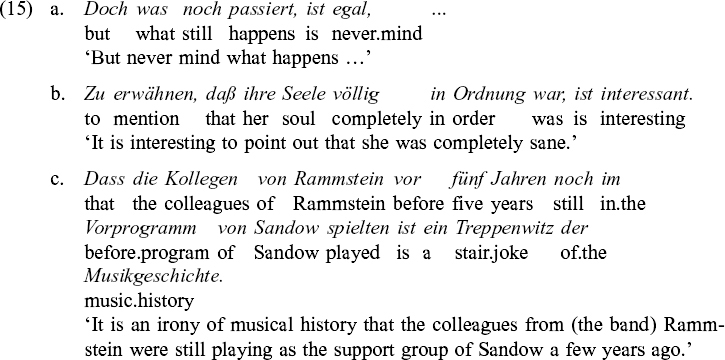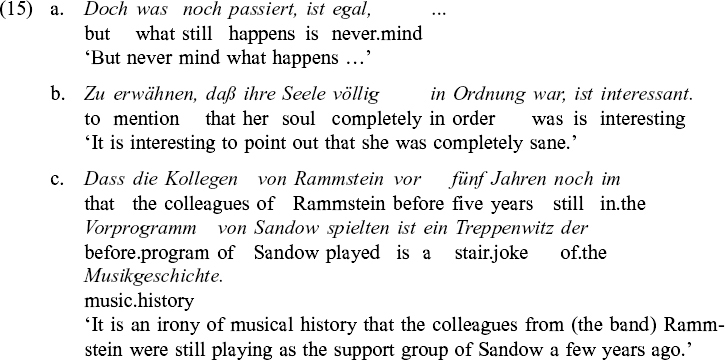Tibor Kiss - SYNTAX - THEORY & ANALYSIS HSK 42.3
Here you can read online Tibor Kiss - SYNTAX - THEORY & ANALYSIS HSK 42.3 full text of the book (entire story) in english for free. Download pdf and epub, get meaning, cover and reviews about this ebook. year: 2015, publisher: De Gruyter Mouton, genre: Home and family. Description of the work, (preface) as well as reviews are available. Best literature library LitArk.com created for fans of good reading and offers a wide selection of genres:
Romance novel
Science fiction
Adventure
Detective
Science
History
Home and family
Prose
Art
Politics
Computer
Non-fiction
Religion
Business
Children
Humor
Choose a favorite category and find really read worthwhile books. Enjoy immersion in the world of imagination, feel the emotions of the characters or learn something new for yourself, make an fascinating discovery.
- Book:SYNTAX - THEORY & ANALYSIS HSK 42.3
- Author:
- Publisher:De Gruyter Mouton
- Genre:
- Year:2015
- Rating:3 / 5
- Favourites:Add to favourites
- Your mark:
SYNTAX - THEORY & ANALYSIS HSK 42.3: summary, description and annotation
We offer to read an annotation, description, summary or preface (depends on what the author of the book "SYNTAX - THEORY & ANALYSIS HSK 42.3" wrote himself). If you haven't found the necessary information about the book — write in the comments, we will try to find it.
This Handbook represents the development of research and the current level of knowledge in the fields of syntactic theory and syntax analysis. Syntax can look back to a long tradition. Especially in the last 50 years, however, the interaction between syntactic theory and syntactic analysis has led to a rapid increase in analyses and theoretical suggestions. This second edition of the Handbook on Syntax adopts a unifying perspective and therefore does not place the division of syntactic theory into several schools to the fore, but the increase in knowledge resulting from the fruitful argumentations between syntactic analysis and syntactic theory.
It uses selected phenomena of individual languages and their cross-linguistic realizations to explain what syntactic analyses can do and at the same time to show in what respects syntactic theories differ from each other.
It investigates how syntax is related to neighbouring disciplines and investigate the role of the
interfaces especially the relationship between syntax and phonology, morphology, compositional semantics, pragmatics, and the lexicon.
The phenomena chosen bring together renowned experts in syntax, and
represent the consensus reached as to what has to be considered as an important as well as illustrative syntactic phenomenon. The phenomena discuss do not only serve to show syntactic analyses, but also to compare theoretical approaches with each other.
Tibor Kiss: author's other books
Who wrote SYNTAX - THEORY & ANALYSIS HSK 42.3? Find out the surname, the name of the author of the book and a list of all author's works by series.

